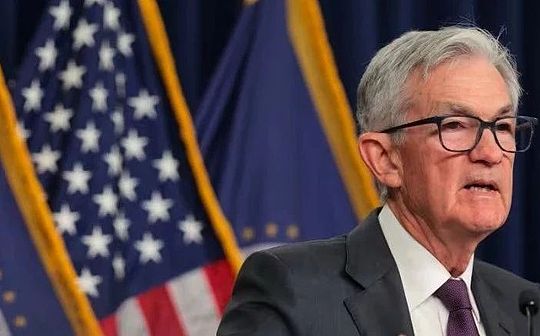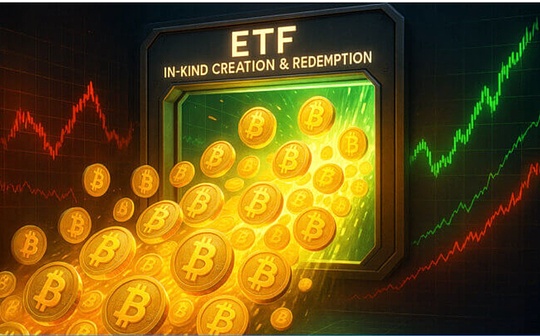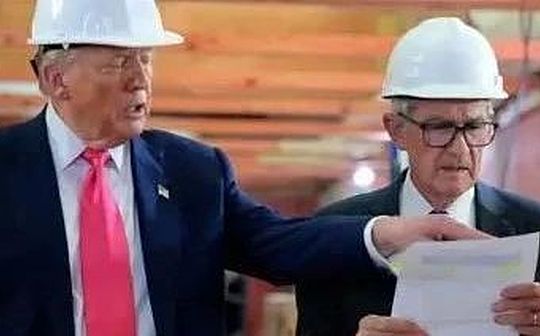
Author: Li Dan, Zhao Yuhe, Wall Street News
Important points:
The Fed continued to suspend interest rate cuts as expected.
In the FOMC vote committee, Powell and nine others continued to support the silence, while Waller and Bowman advocated a 25 basis point interest rate cut.
Compared with the last statement, the rhetoric of deletion of economic uncertainty has weakened and the uncertainty is still high. It no longer says that “economic activities continue to expand steadily”, and it is renamed “economic growth in the first half of the year is easing.”
“New Fed News Agency”: “Rare” two people objected, demanding an immediate rate cut, highlighting the breakdown of the consensus among Fed policymakers on the impact of tariffs.
Economists believe the statement is dovish than expected, with the possibility of a rate cut in September increasing, and PCE and non-farm employment data expected to be released this week may exacerbate the Fed’s disagreement.
Powell did not provide guidance on a rate cut in September, saying it was too early to assert whether the Fed would lower the federal funds rate in September as expected by financial markets, cooling down market expectations for a rate cut in September.
Despite the first time that US President Trump has recently personally urged interest rate cuts, Trump administration officials and Republicans have repeatedly put pressure on “decoration doors”, the Federal Reserve remains unmoved.
But this time,The Fed exposed the biggest internal discrepancy on interest rate cuts since the launch of the interest rate cut cycle last September and has made dovish adjustments to economic activities.
On Wednesday, July 30, Eastern Time, the Federal Reserve announced after the Monetary Policy Committee FOMC that the target range of federal funds rate remains at 4.25% to 4.5%.
So far, FOMC has decided to suspend its actions for five consecutive monetary policy meetings.The Fed has cut interest rates for three consecutive meetings since September last year, with a total drop of 100 basis points. Since Trump took office in January this year, he has remained unchanged.
The decision of this meeting was completely expected by investors.By the close of Tuesday, CME’s tools showed that the futures market expects the probability of the Fed keeping interest rates unchanged this week is close to 98%, and the probability of a rate cut in the next meeting in September is nearly 65%.Before the Federal Reserve announced its resolution on Wednesday, even U.S. Treasury Secretary Becent and Trump himself expected that the Federal Reserve would not cut interest rates this time.
Compared with interest rate cuts, the Fed’s internal discrepancy has become a bigger highlight of this resolution.Both Fed officials support rate cuts at this meeting.This is the most opposed votes in the FOMC interest rate resolution vote since the Fed initiated a cycle of interest rate cuts.
Nick Timiraos, a reporter known as the “New Federal Reserve News Agency”, commented that two officials “rare” opposed maintaining interest rates and demanded an immediate rate cut.These objections highlight the collapse of consensus among Fed policymakers when discussing the impact of tariffs on the economy and inflation.
Anna Wong, chief American economist at Bloomberg Economics Institute, believes that this isFor the first time since 1993, two Fed governors have objected to the resolution.This internal discrepancyIt seems quite prominent, perhaps out of compromise, and this policy statement is more dovish than the institute predicts, pointing out that economic growth has slowed down in the first half of this year.
Wong expects that the core U.S. PCE inflation data released on Thursday and the July non-farm employment data released on Friday may further exacerbate the differences within the FOMC.
Bloomberg Economic Research Institute believes that most FOMC members will not have enough confidence that inflation will develop in the right direction until the end of this year.But this dovish statement indicates an increase in the possibility of a rate cut in September.
It is worth noting thatPowell’s FOMC press conference did not provide guidance on the September rate cut.It is too early to assert whether the Fed will lower the federal funds rate in September as expected by financial markets.
He said the U.S. labor market “looks solid” and inflation remains above target.Traders interpreted the remarks as detrimental to immediate rate cuts.
U.S. stocks erased gains, and the S&P 500 fell 0.1%.Although the stock and bond market declines seem mild, this marksThe worst Fed decision-making day performance since December.
For the first time in 32 years, two directors voted against the resolution
Most of the Fed’s resolution statements follow the contents of the last FOMC meeting in June.hostThere are three changes, the most eye-catching one: Among the 11 members who voted at this FOMC meeting, two voted against the resolution to suspend interest rate cuts..This is the most objection votes since the Federal Reserve continued to suspend interest rate cuts this year.
The resolution statement showed that nine FOMC members, including Federal Reserve Chairman Powell, continued to vote for keeping interest rates unchanged.The two voted against it, Fed Director Waller and Trump-nominated Fed Vice Chairman in charge of financial regulation.They all advocated a 25 basis point rate cut at this meeting.
Waller and Bowman’s vote against him is not actually a surprise.More than a month ago, since the Federal Reserve’s interest rate settlement meeting in June, Waller publicly expressed his calls for a rate cut in July several times. Bowman also said earlier this month that he was preparing to cut interest rates as early as July.
Timiraos noted that Bowman’s opposition marked a significant shift as he has been a major advocate of currencies in recent years and he also opposed the rate cut when the Fed launched a rate cut last September.
Timiraos hinted that Waller’s support for the rate cut appears to be fighting for Trump’s nomination as the next Fed chairman.Because he expressed support for the rate cut two weeks ago, this coincides with the primary election time of the next Fed chairman.Waller said this month that concerns interest rates are too high for an economy that lacks inflationary action, which is consistent with the views of some economists and former Fed officials.
Delete economic uncertainty has weakened, reiterates uncertainty is still high, saying economic growth has eased in the first half of the year
The other two changes in this Fed resolution are related to the economy.One of them is the argument about uncertainty in the economic outlook.
JuneLast timeConference statementsay, “Economic prospects related toUncertainty has diminished,butStill high.”This timeThe statement deleted the claim that uncertainty had weakened, directly reiterated that the uncertainty was too high, and wrote:
“Economic prospects related toUncertainty is still high.”
Immediately following the above sentence, this statement reiterates that the FOMC Committee focuses on the two risks faced in achieving the dual mission of full employment and price stability.
Another change is when commenting on economic activities.Last time“While net export fluctuations have affected the data, recent indicators showEconomic activities continue to expand steadily.” This time it is renamed:
“While net export fluctuations have affected the data, recent indicators showEconomic growth in the first half of the year was mild.”
In other economic comments, this time, it continues to reiterate that the unemployment rate in the United States is still low, the labor market is stable, and inflation is still high.
Nationwide chief economist Kathy Bostjancic commentedThe Fed’s statement removed the wording that previously suggested that uncertainty in the economic outlook had diminished, but that the uncertainty was still high, which surprised her.Although uncertainty remains high, this uncertainty has been greatly reduced given the increasing clarity in trade and tariffs.
In addition, the statement continues to reiterate that the Fed will continue to reduce its holdings of U.S. Treasury bonds, institutional bonds and institutional mortgage-backed securities (MBS).
Starting from April this year, the Federal Reserve has further slowed down its quantitative tightening (QT) action, a balance sheet reduction (balance sheet reduction).The specific approach is to lower the monthly redemption cap of US Treasury bonds from US$25 billion to US$5 billion, while keeping the monthly redemption cap of US$35 billion for institutional debt and institutional MBS unchanged.
Since then, the Federal Reserve has not changed its balance sheet reduction guidelines for three consecutive meetings, indicating that the balance sheet reduction continues to be carried out at the above pace.
The following red letters show the deletion and new content of this resolution statement compared to the last time.

Powell did not give guidance on the September rate cut
Federal Reserve Chairman Powell did not provide guidance on the September rate cut at a press conference after the FOMC meeting, saying that it is too early to assert whether the Federal Reserve will lower the federal funds rate in September as expected by financial markets, cooling down the market’s expectations for a September rate cut.
Powell believes that the impact of current policy changes is still uncertain. The reasonable basic assumption is that the impact of tariffs on inflation will be short-term, but it may also make the inflation effect more stubborn.
Specifically, Powell said that due to the influence of tariff-related news, some indicators that measure inflation expectations have generally risen, whether based on the market or the expectations obtained from surveys.But in the longer term, most inflation expectations indicators still match the Fed’s 2% target.
Powell said the Fed will continue to determine the appropriate position of monetary policy based on the latest data, changes in the economic outlook and the balance of various risks.
Changes in government policy continue and their impact on the economy is unclear.Higher tariffs have been more clearly reflected in the prices of some commodities, but the overall impact of these tariffs on overall economic activity and inflation remains to be seen.
A reasonable basic expectation is that the impact of tariffs on inflation may be only one-time and will lead to a short-term increase in price levels.But there is another possibility that this inflationary impact will continue, and this risk requires us to closely evaluate and manage.
Powell also pointed out that the Fed is ready to further understand economic trends and changes in various risks before adjusting its policy stance.A large amount of data in the coming months will allow the Fed to assess the risk balance and determine the appropriate level of federal funds rate.







